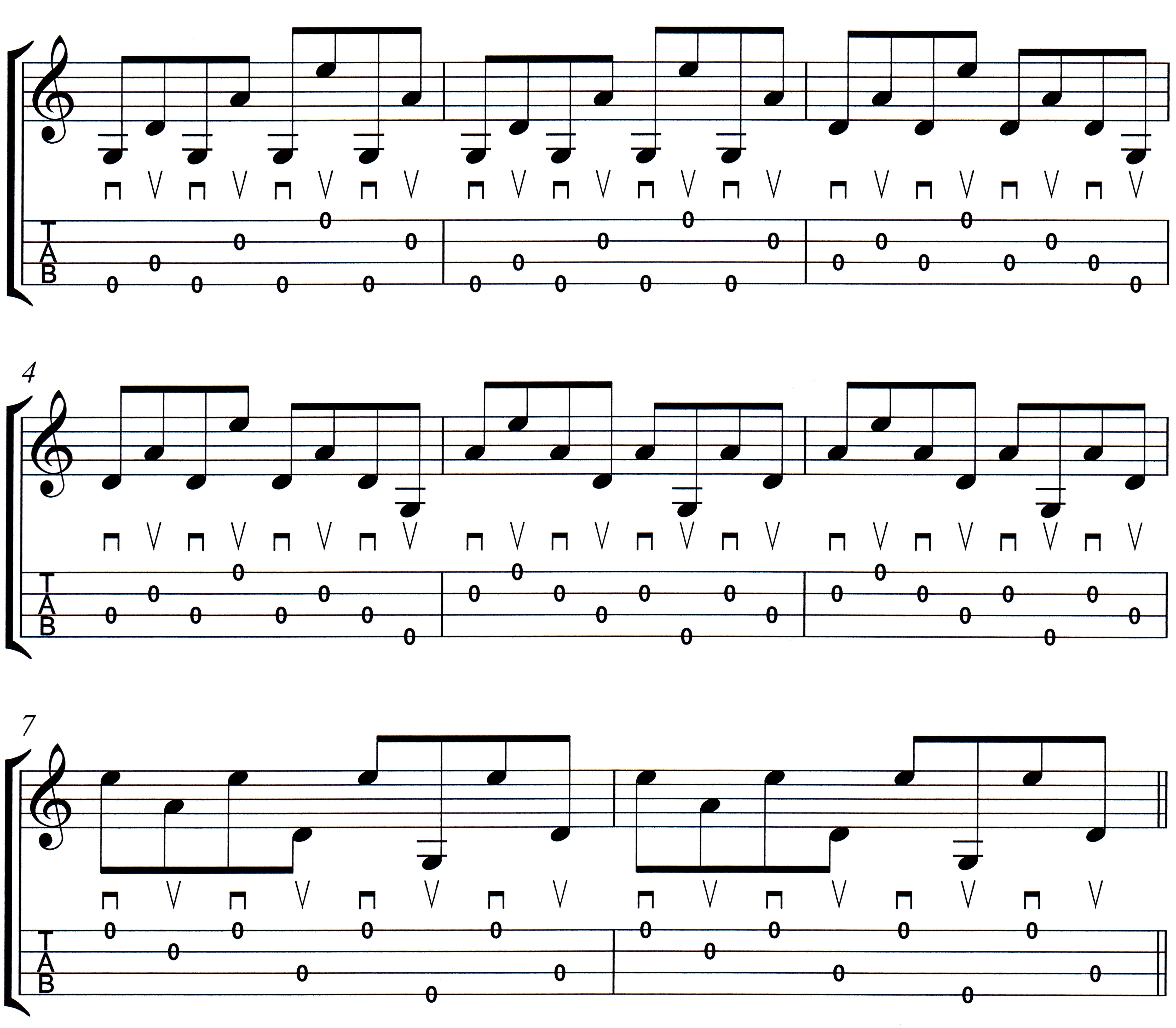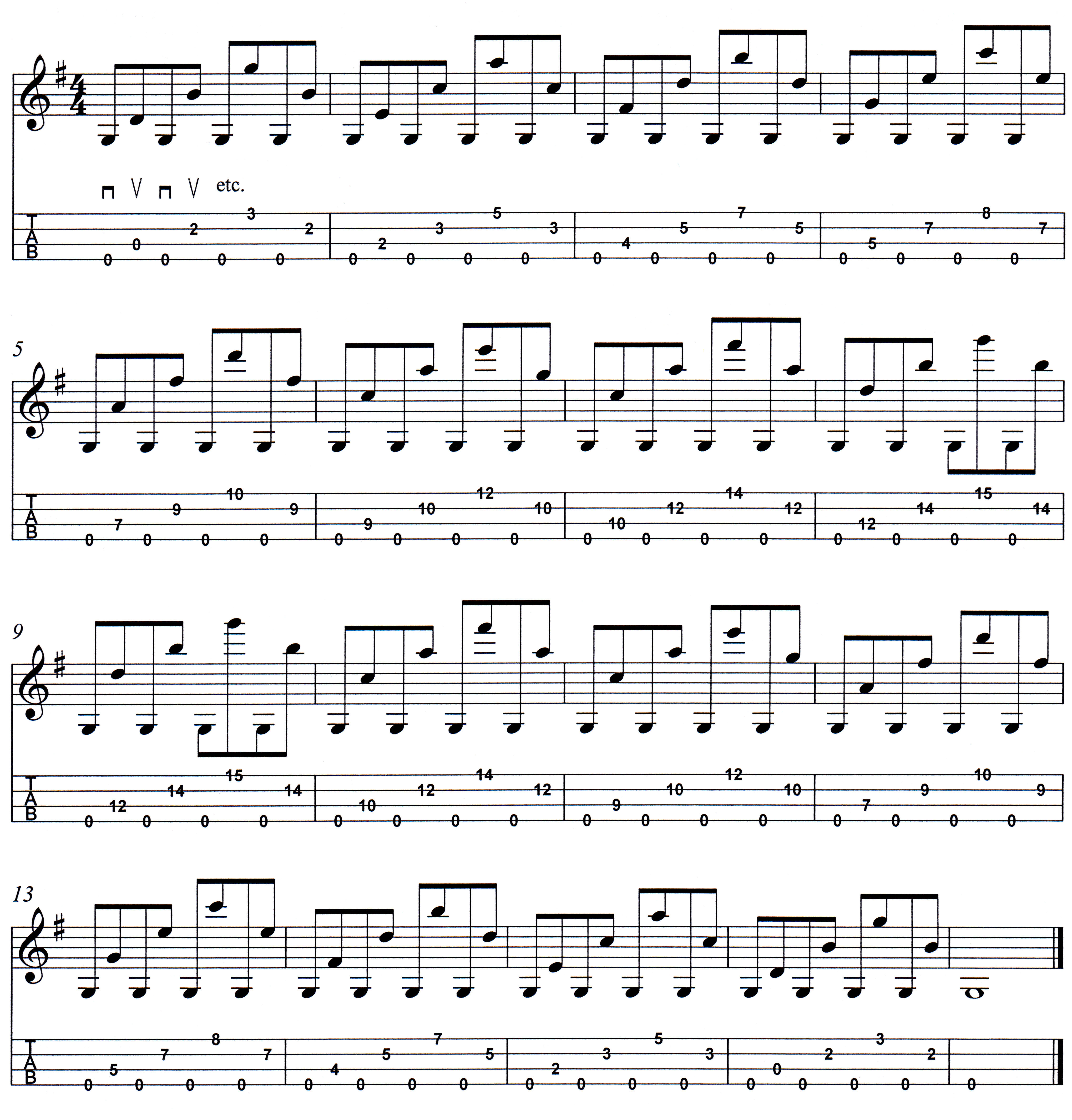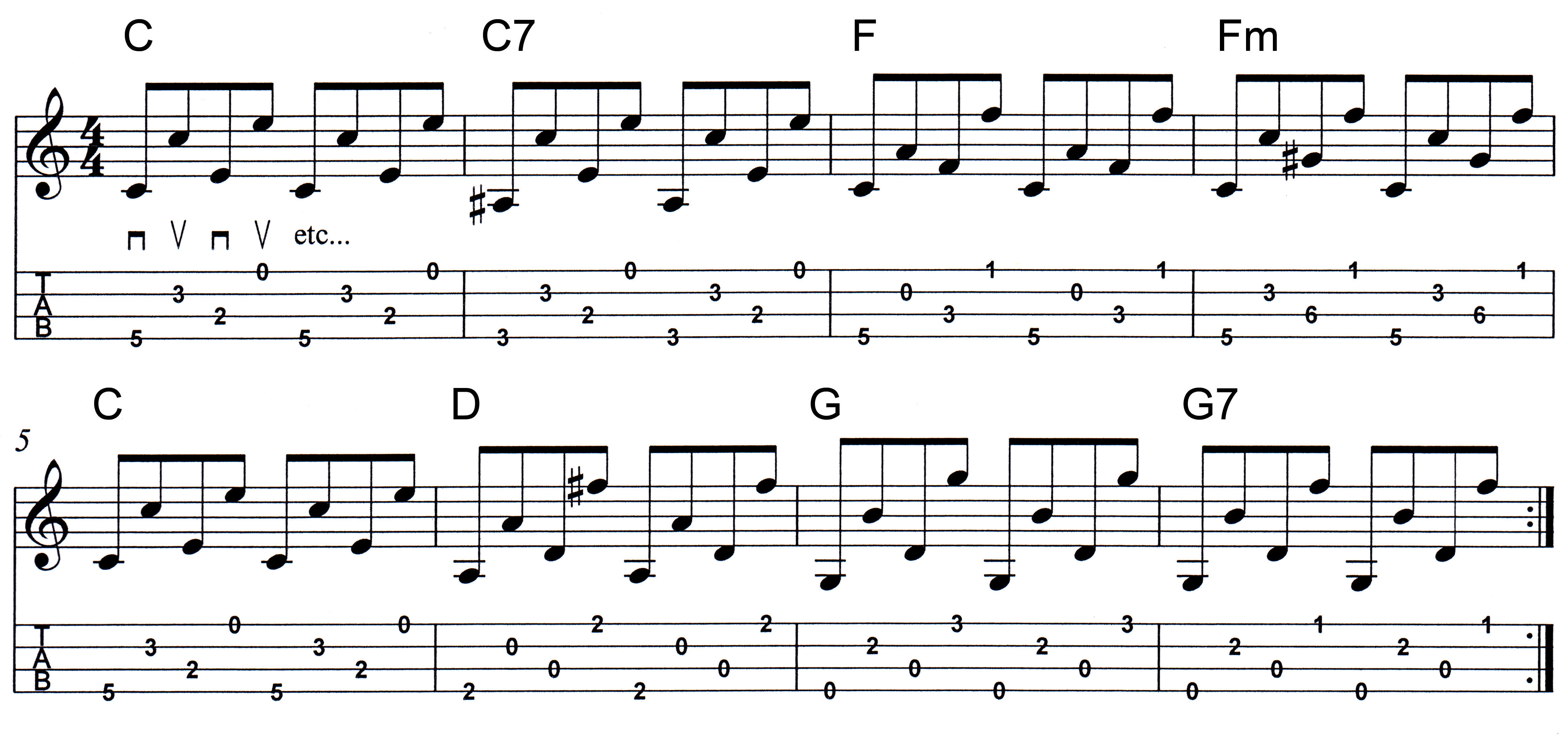
Crosspicking is an essential technique that will enhance your ability to play more complex parts, whether by learning what others have done or in writing your own parts to songs. Crosspicking can be described as the
mandolin trying to sound like a banjo. It is most often simply arpeggiated chords, allowing multiple strings to sustain in harmony, and executed with a banjo style roll. You will employ either straight alternate picking
or economy picking technique.
In the first example we set up the basis of what crosspicking is. You are literally alternating your picking with every stroke. You will be playing the low G string on every beat and then playing the D, A and E strings
in between, then shifting to the D string, and then the A string. On the high E string, you do the whole thing backwards - all the while maintaining the strict alternating picking pattern. Take your time and learn this
technique well.

Once you are comfortable with this give the following exercise a workout, which uses diatonic triads of G major. Be careful to observe the fingering differences, and make sure you're on the right frets - especially
higher up on the neck where they are extremely close together! Take your time, walk through it slowly. Then, as with all exercises and songs, put it to the metronome at a tempo you can manage, preserving all technique
and smoothness in flow.

Okay, now for something a bit more musical... and very challenging to your fretting skills. Be sure to keep your thumb on the back of the neck for support! It is the only way you'll get this to sound smooth and even,
in both chord changes and flow of the melodic elements between chords.

Now you should make up your own picking patterns and progressions as a way to further integrate this valuable technique into your playing. You can also alter songs you are already playing to see if they sound good using this technique. You literally have the control here. All that matters is, when playing with other people, does applying this technique sound good, does it contribute to the overall sound of the song? You can also alternate within a song in the use of this technique, maybe using it for the bridge, to change things up a bit.
As with any given technique, you don't want to overuse it. So spread it out and be a bit conservative for a while so things don't begin to all sound the same.
That's it for today.
Now, go start makin' some foot stompin' music!